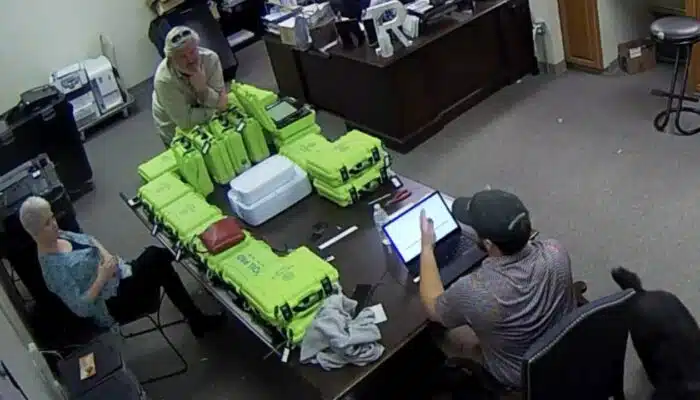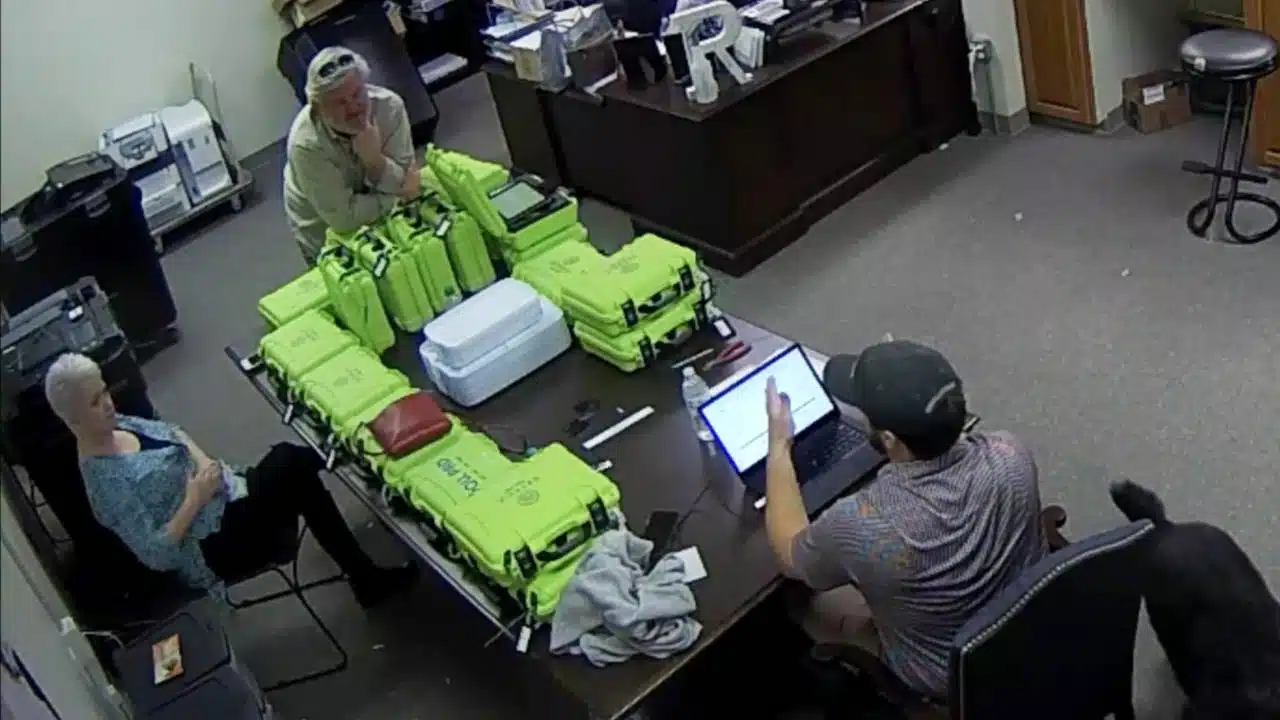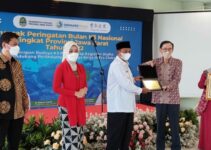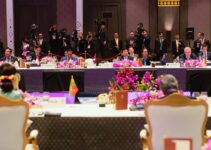Peralatan Pencoblosan Yang Ramah Disabilitas Di Pilkada Majalengka, a vital initiative for inclusivity, aims to empower voters with disabilities to participate fully in the democratic process. The recent elections in Majalengka highlighted the importance of providing accessible voting equipment and procedures, ensuring that all citizens can exercise their right to vote without barriers.
This exploration delves into the challenges faced by people with disabilities during elections in Majalengka, examines the types of disability-friendly voting equipment used elsewhere, and analyzes the implementation of such equipment in the recent elections. It also emphasizes the need for comprehensive training and awareness programs for election officials, advocating for a more inclusive and accessible voting experience for all.
Accessibility Challenges in Majalengka Elections
The right to vote is a fundamental democratic principle, and it’s crucial to ensure that everyone, including people with disabilities, can participate fully and equally in elections. In Majalengka, like many other regions, people with disabilities often face significant accessibility challenges that hinder their ability to cast their votes.
Accessibility Challenges in Polling Stations and Voting Procedures
Polling stations in Majalengka can present several accessibility barriers for voters with disabilities. Some common challenges include:
- Lack of ramps and accessible entrances:Many polling stations lack ramps or accessible entrances, making it difficult for people with mobility impairments to enter and exit the building.
- Narrow doorways and congested spaces:Narrow doorways and congested spaces within polling stations can be challenging for people using wheelchairs or assistive devices.
- Inadequate lighting and signage:Poor lighting and insufficient signage can create difficulties for people with visual impairments to navigate the polling station.
- Unfamiliar voting procedures:The voting process itself can be confusing for some people with disabilities, especially those with cognitive impairments, if there is no clear and accessible information available.
- Limited assistance:The lack of trained election officials who can provide adequate assistance to voters with disabilities can further exacerbate these challenges.
These accessibility barriers can significantly impact voter participation and inclusion. People with disabilities may be discouraged from voting due to the difficulties they face, resulting in lower voter turnout and a diminished voice in the democratic process.
Types of Disability-Friendly Voting Equipment
Various types of disability-friendly voting equipment have been developed and implemented in other regions and countries to address accessibility challenges and ensure equal voting opportunities for all.
Examples of Disability-Friendly Voting Equipment
Here is a table outlining some common types of disability-friendly voting equipment, their features, and target disability groups:
| Equipment Type | Features | Target Disability Group |
|---|---|---|
| Audio Voting Machines | Provides audio instructions and feedback, allowing voters with visual impairments to independently cast their votes. | Visual impairments |
| Braille Voting Machines | Equipped with braille displays and buttons, enabling voters with visual impairments to read and select their choices. | Visual impairments |
| Large Print Ballots | Ballots with enlarged font sizes to improve readability for voters with visual impairments. | Visual impairments |
| Touchscreen Voting Machines | Features touchscreens with intuitive interfaces, making voting accessible to people with motor impairments. | Motor impairments |
| Adaptive Keyboards and Mouse Devices | Allows voters with motor impairments to use alternative input methods for voting. | Motor impairments |
| Accessible Polling Booths | Polling booths with wider doorways and adjustable heights to accommodate people using wheelchairs or assistive devices. | Mobility impairments |
Each equipment type offers unique benefits and limitations. For example, audio voting machines provide independent voting for visually impaired individuals but may not be suitable for those with cognitive impairments. Touchscreen voting machines are accessible to people with motor impairments but might require additional training for some individuals.
Implementation of Disability-Friendly Equipment in Majalengka: Peralatan Pencoblosan Yang Ramah Disabilitas Di Pilkada Majalengka
In the recent Majalengka elections, some steps were taken to improve accessibility for voters with disabilities. However, the implementation of disability-friendly voting equipment remains limited.
Availability and Implementation of Disability-Friendly Equipment
Here is a table showcasing the availability and implementation of disability-friendly voting equipment in specific polling stations in Majalengka during the recent elections:
| Polling Station Location | Available Equipment | Challenges Encountered |
|---|---|---|
| Majalengka City Hall | Large print ballots, audio voting machine | Limited training for election officials on using the equipment. |
| Leuwimunding Public Library | Accessible polling booth, touch screen voting machine | Lack of awareness among voters about the availability of the equipment. |
| Jatiwangi Community Center | None | No disability-friendly equipment available at this location. |
This table highlights the uneven distribution and limited availability of disability-friendly voting equipment in Majalengka. It also reveals challenges such as inadequate training for election officials and insufficient awareness among voters.
A Plan for Better Integration of Disability-Friendly Equipment
To ensure more inclusive and accessible elections in the future, it’s essential to develop a comprehensive plan for integrating disability-friendly equipment. This plan should include:
- Increased Availability:Expanding the availability of disability-friendly equipment across all polling stations in Majalengka.
- Equipment Diversity:Providing a variety of equipment types to cater to the diverse needs of voters with different disabilities.
- Training and Support:Providing comprehensive training for election officials on using and assisting voters with disability-friendly equipment.
- Accessibility Audits:Regularly conducting accessibility audits of polling stations to identify and address any barriers.
- Public Awareness Campaigns:Launching public awareness campaigns to inform voters with disabilities about the availability of accessible voting options.
By implementing these measures, Majalengka can create a more inclusive and accessible electoral system for all its citizens.
Training and Awareness for Election Officials
It’s crucial to provide adequate training and raise awareness among election officials about disability inclusion and the use of disability-friendly voting equipment.
Training Program for Election Officials
A comprehensive training program for election officials should include:
- Understanding Disability Rights and Inclusion:Providing training on disability rights, the importance of inclusivity, and the legal framework surrounding accessibility in elections.
- Disability-Friendly Voting Equipment:Hands-on training on using and assisting voters with various types of disability-friendly voting equipment.
- Communication and Interaction Skills:Developing communication and interaction skills to effectively assist voters with disabilities.
- Sensitivity and Respect:Emphasizing the importance of sensitivity and respect when interacting with voters with disabilities.
Raising Awareness about Disability Inclusion
Raising awareness among election officials about disability inclusion is crucial for creating a welcoming and accessible environment for voters with disabilities.
- Workshops and Seminars:Conducting workshops and seminars to educate election officials about the challenges faced by voters with disabilities.
- Best Practices and Guidelines:Sharing best practices and guidelines for creating accessible polling stations and interacting with voters with disabilities.
- Disability Inclusion Training:Making disability inclusion training mandatory for all election officials.
Recommendations for Improving Accessibility
To further enhance accessibility for voters with disabilities in future elections in Majalengka, several recommendations can be implemented.
Strategies for Inclusive Voting Procedures and Accessible Polling Stations
These strategies can be implemented to ensure inclusive voting procedures and accessible polling stations:
- Accessible Voting Materials:Providing all voting materials, including ballots, instructions, and signage, in accessible formats such as large print, braille, and audio.
- Assistive Technology:Making assistive technology, such as screen readers, voice recognition software, and braille displays, available at polling stations.
- Trained Election Officials:Ensuring that all election officials are adequately trained to assist voters with disabilities.
- Accessible Transportation:Providing accessible transportation options to and from polling stations for voters with mobility impairments.
- Early Voting Options:Offering early voting options to accommodate voters with disabilities who may have difficulty voting on Election Day.
Role of Technology and Digital Solutions, Peralatan Pencoblosan Yang Ramah Disabilitas Di Pilkada Majalengka
Technology and digital solutions can play a significant role in enhancing accessibility for voters with disabilities.
- Online Voting Platforms:Developing secure and accessible online voting platforms that allow voters with disabilities to cast their votes from home.
- Mobile Apps:Creating mobile apps that provide information about polling station accessibility, voting procedures, and accessible voting options.
- Virtual Assistance:Offering virtual assistance through chatbots or video conferencing to answer questions and provide support to voters with disabilities.
By implementing these recommendations and embracing technology, Majalengka can create a truly inclusive and accessible electoral system that empowers all citizens to participate fully in the democratic process.
Closing Summary
By implementing these recommendations and fostering a culture of accessibility, Majalengka can become a model for inclusive elections in Indonesia. The goal is to ensure that every voter, regardless of their abilities, has a fair and equal opportunity to participate in the democratic process, strengthening the foundation of a truly inclusive society.
FAQ Explained
What specific types of disabilities are addressed by these equipment?
The equipment caters to a range of disabilities, including visual impairments, mobility limitations, and cognitive challenges.
Are there any legal requirements for providing disability-friendly voting equipment?
While specific legal requirements may vary, the principle of accessibility and inclusion is generally recognized as essential for fair and democratic elections.
How can voters with disabilities access information about the available equipment and procedures?
Information should be disseminated through various channels, including websites, social media, and outreach programs, ensuring accessibility for all.










